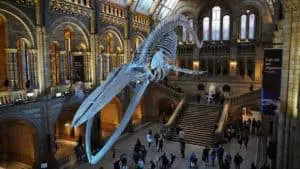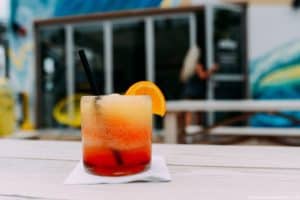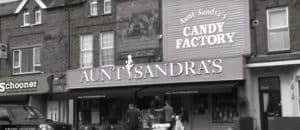Braveheart Revisited: Exploring Scotland’s Highlands and Legendary Historical Landmarks
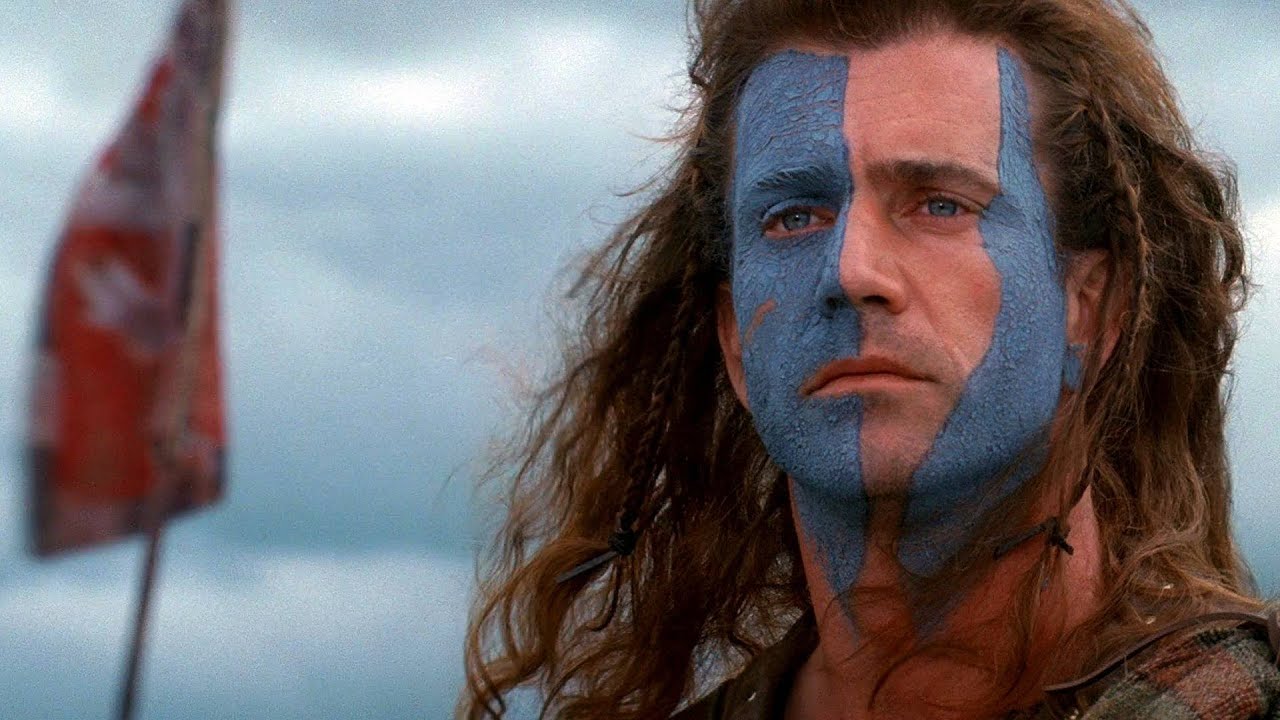
Updated On: April 15, 2024 by Maha Yassin
The Scottish Highlands, cloaked in the mystique of history and natural beauty, have long captivated the imagination of travellers and history enthusiasts alike. Often synonymously linked with the epic tale of William Wallace, as immortalised in the film ‘Braveheart’, these rugged landscapes echo the stories of Scotland’s past. Our journey takes us beyond the cinematic portrayal to uncover the true resonance of these sites, steeped in the rich tapestry of Scottish heritage.
Setting out across Scotland’s sweeping vistas, we find ourselves tracing the footsteps of the history that shaped the nation. The historic battlegrounds, castles, and monuments scattered throughout the Highlands are markers of pivotal moments in Scottish history. It’s here where the interplay between the often romanticised silver-screen depictions and factual history invites a deeper exploration, promising enlightenment and adventure for those seeking it.
The Life of William Wallace
In exploring the life of William Wallace, one cannot overlook his early years, his vigorous participation in the struggle for Scottish freedom, and his tragic end. His tale is integral to understanding Scotland’s historic fight for independence.
Early Life and Lanark
William Wallace was born around 1270, most likely near Paisley, Renfrewshire, in Scotland. His upbringing in the early years of his life took place against a backdrop of Scottish unrest under the rule of King Edward I of England. By 1297, Wallace retaliated against English authority by attacking the town of Lanark and killing the sheriff, a move often seen as the beginning of his rebellion.
The Struggle for Scottish Independence
Wallace quickly became a central figure in the Scottish resistance. His leadership was defined by significant military engagements, such as the Battle of Stirling Bridge in 1297, where he achieved a striking victory. Unfortunately, the success at Stirling would not last; the subsequent Battle of Falkirk brought a devastating loss to the Scots in 1298, leading to a tactical reevaluation of the rebellion.
Capture and Death
Wallace continued to resist English governance, but in August 1305, he was captured near Glasgow. He was transported to London for a trial where he faced charges of treason, to which he famously retorted that he could not be a traitor to Edward as he had never sworn allegiance to him. Wallace was executed gruesomely on 23 August 1305; a man whose life and death have become synonymous with the spirited fight for Scottish independence.
Historical Context of Braveheart
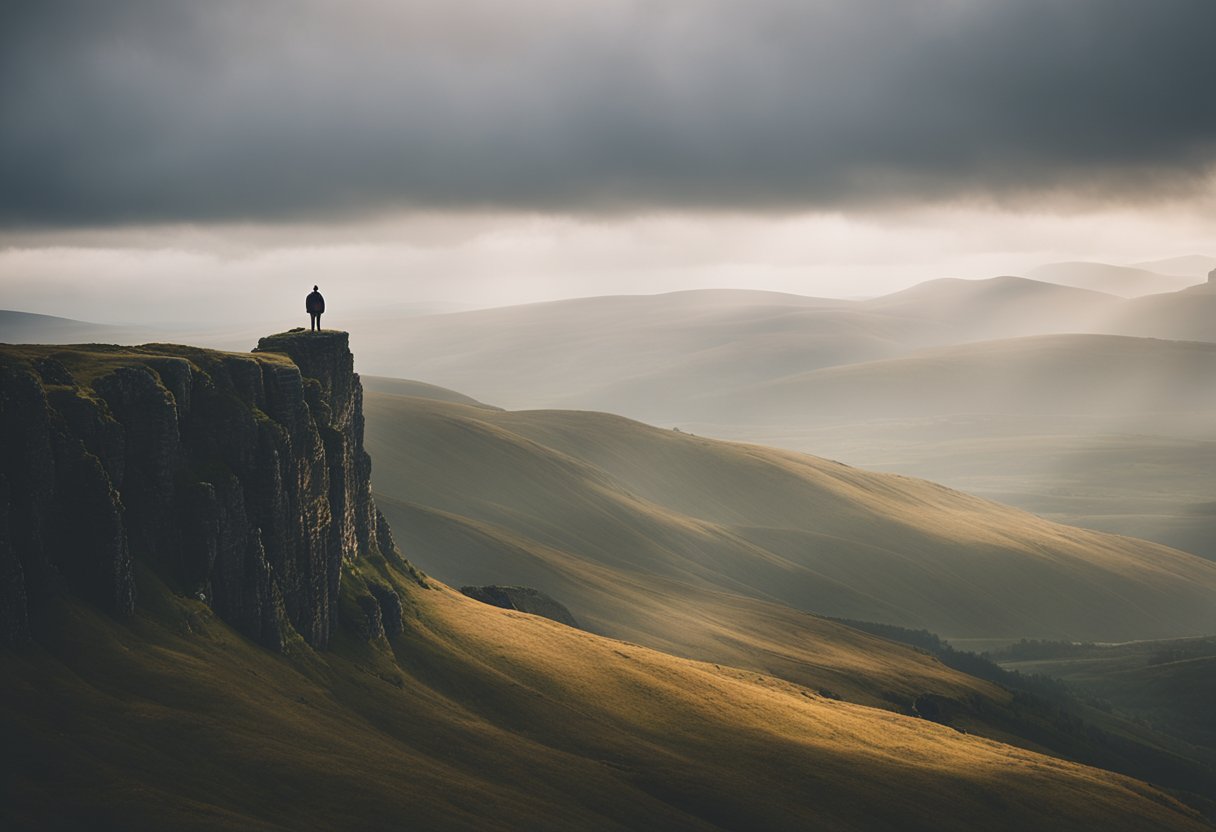
Exploring the historical context of Braveheart offers a glimpse into the tumultuous period of the 13th century, the struggle of Scotland for independence, and influential characters like Robert the Bruce and Edward I, whose decisions and leadership profoundly impacted Scottish history.
13th Century Scotland
In the 13th century, Scotland was a land of emergent national identity, marked by the feudal system and ruled by powerful clans. The death of King Alexander III in 1286 without a direct heir plunged the country into a succession crisis, setting the stage for the Wars of Scottish Independence.
The Wars of Scottish Independence
Two major wars characterised this stark period, fought between 1296 and 1357. The First War of Independence began with the English invasion in 1296, led by King Edward I, aiming to subjugate Scotland. William Wallace’s famous victory at the Battle of Stirling Bridge in 1297 became a symbolic moment of defiance, encapsulated in the film ‘Braveheart’, although the film contains historical inaccuracies.
Key Historical Figures
Robert the Bruce, crowned in 1306, asserted himself as a pivotal leader in the quest for Scottish independence, while Edward I of England, known for his military campaigns and moniker ‘Hammer of the Scots’, played the villain in this historical narrative. Their clash at the Battle of Bannockburn in 1314, where Bruce secured Scotland’s sovereignty, marked a defining point in Scottish history.
Iconic Locations in Braveheart
As we revisit Braveheart’s historical epic, we transport ourselves to the scenic backdrops and formidable structures that became the stages of Scotland’s struggle for freedom. These locations provided stunning vistas for the film and carry the weight of Scotland’s vibrant history.
Stirling and the Stirling Bridge
Stirling is revered for its pivotal role in Scottish history, especially concerning the Battle of Stirling Bridge. Although the film’s portrayal of the battle departed from historical accuracy, the spirit of the landmark’s significance was captured. Stirling Castle, perched high on volcanic rock, offers panoramas of the landscape that served as William Wallace’s stronghold and helped foster his legend.
Edinburgh and Its Castle
Edinburgh, Scotland’s symbolic capital, and the majestic Edinburgh Castle hold centuries of history within their walls. The castle, which dominates the skyline atop Castle Rock, did not appear in Braveheart but remains an integral part of Scottish national heritage and the canvas of its tumultuous past.
The Battlefields of Scotland
The rugged landscapes of Scotland are synonymous with the bloodied battlefields where freedom was fiercely fought. The film pays homage to these sites, notably the real Bannockburn, which, though not depicted in the film, was a decisive victory for Scotland during the First War of Scottish Independence, much like the film’s portrayal of battles at Stirling.
Exploring Scottish Highlands
Traversing the Scottish Highlands reveals a tapestry of raw landscapes and rich traditions. This region is where one can truly immerse oneself in the natural splendour of Scotland and connect with the enduring legacy of Highland culture.
Natural Landscapes and Beauty
The Scottish Highlands represent a realm of extraordinary natural beauty, characterised by dramatic scenery ranging from Glencoe’s brooding valleys to the craggy peaks of the Cairngorms National Park. This region boasts some of the most stunning vistas in the UK, with vast expanses and wilderness that beckon adventurers and nature enthusiasts alike.
- Glencoe: Known for its haunting beauty and steeped in history, it offers scenic drives and walking paths for all abilities.
- Cairngorms National Park: Home to five of the UK’s six highest mountains, this park is a haven for wildlife and outdoor sports and is the epitome of the Highlands’ untamed nature.
Highlander Culture and Traditions
Highlander culture is woven into the very fabric of the Highlands. Its traditions remain a vibrant part of the regional identity, from the stirring sound of the bagpipes to the visual spectacles of the Highland Games. The cultural heritage of this area has persisted through centuries, reflecting the resilience and warmth of its people.
- Traditional Music: Bagpipes are perhaps the most iconic elements of Highlander culture; their melodies are integral to traditional celebrations.
- Highland Games: Events such as caber tossing and hammer throwing encapsulate the strength and community spirit of the Highlands.
Historical Sites and Museums
In exploring Scotland’s rich tapestry of history, we look at the monumental sites and repositories of heritage that have captivated visitors for generations.
National Wallace Monument
The National Wallace Monument stands tall on the Abbey Craig, near Stirling, as a testament to the legacy of Sir William Wallace, a leader during the Wars of Scottish Independence. Visitors can climb the monument’s tower for a panoramic view of the surrounding landscape, where pivotal moments of Scottish history unfolded. The monument offers a journey back in time and a tribute to a figure who embodies Scotland’s enduring spirit of freedom.
Scottish Historical Museums
Scotland’s historical museums serve as custodians of the nation’s past, with Edinburgh Castle anchoring the capital’s skyline and offering insights into royal history and military strategy. Visitors can explore its storied halls and view the Stone of Destiny, used in the coronation of Scottish rulers. With its strategic location, Stirling Castle unveils the narrative of Scotland’s Renaissance period through restored chambers and period furnishings. These museums, together with a myriad of other historical sites, tell the story of Scotland’s complex and stirring past.
The Representation of Scotland in Film
The film Braveheart has significantly influenced the perception of Scotland in popular culture, particularly through its choice of filming locations and subsequent impact on tourism.
Filming Locations from Braveheart
Braveheart, directed by and starring Mel Gibson, utilised various historical sites throughout Scotland and Ireland to portray the epic tale of William Wallace. Despite the story being deeply rooted in Scottish history, many filming locations were in Ireland. Ardmore Studios served as a production base for the film, while the scenic Wicklow Mountains National Park provided a backdrop for several key scenes. In Scotland, Glen Nevis was featured prominently, offering its majestic landscapes to represent the rugged beauty of the Highlands. Glencoe, known for its dramatic valleys and peaks, also made significant appearances, tying the narrative to the essence of Scottish identity.
Impact of Braveheart on Scottish Tourism
The release of Braveheart saw a surge in interest towards Scotland’s vistas and historical sites, firmly establishing the film’s influence in shaping Scottish tourism. The film captivated audiences with its storyline and sparked an appreciation for the natural and historical grandeur of Scotland’s locations, such as Glencoe and Glen Nevis. The ‘Braveheart effect’ became a term coined to describe the increase in visitors eager to experience the land that inspired the freedom-seeking protagonist of the film. This phenomenon showcases the power of popular culture, in this case, Braveheart, in inspiring travel and tourism, thereby contributing to the local economy.
Interest in locations tied to Scottish cinematic lore extends beyond Braveheart, with films like Outlaw King further emphasizing the allure of Scotland’s historical richness and scenic splendour. The enduring impact of these films illustrates the importance of Scotland in the narrative of global pop culture, resonating through the years in the hearts and minds of those who behold them.
A Guide to Scottish Historical Tours
In this guide, we uncover the wonders of Scotland’s past through meticulously curated historical tours. Whether strolling through Edinburgh’s cobbled streets or embarking on adventures from the country’s major cities, these tours present a compelling way to delve into Scotland’s rich heritage.
Edinburgh’s Historic Mile
The Royal Mile in Edinburgh is a must-visit for history enthusiasts. This iconic thoroughfare is the heart of the capital’s Old Town and leads you from Edinburgh Castle to Holyrood Palace. Day tours here feature historical re-enactments and storytellers that bring to life the tales of Scotland’s colourful past.
Day Trips from Major Cities
From Glasgow to Edinburgh, numerous day trips are available to historical sites such as Stirling Castle and the Wallace Monument. These excursions offer a convenient way to explore beyond the city limits. Cities like Inverness are gateways to the Scottish Highlands, where history is etched into the rugged landscapes.
Private Tours and Availability
For those seeking a more personalised experience, private tours cater to smaller groups and can be tailored to specific historical interests. The availability of these tours is generally flexible, with guides striving to accommodate preferred dates and times. Witness the battlefields of Bannockburn or the architecture of Stirling Castle in a more intimate setting.
Embark on a journey through Scotland’s storied past with these historical tours, each offering unique perspectives and unforgettable experiences.
Scotland’s Involvement in Pop Culture
Scotland has left a significant mark on pop culture, particularly through film and television, spotlighting its rich history and landscapes. Our portrayal in media ranges from historically-themed epics to modern series that weaves through the intricacies of Scottish heritage.
From Braveheart to Outlaw King
The epic tale of William Wallace in Braveheart significantly amplified global interest in Scotland’s tumultuous past. Although criticised for historical inaccuracies, its impact on Scotland’s visibility in pop culture remains profound. Following its legacy, Outlaw King emerged as another cinematic venture that aimed to capture the essence of Scottish history, focusing on the life of Robert the Bruce and his fight for Scotland’s freedom.
Modern Depictions of Scottish History
Scotland has continued to fascinate as the backdrop for several popular series in recent years. Historical fiction and the artistry of storytelling bring to life the mystique of the Scottish Highlands. These modern portrayals, though not always historically precise, have reinforced Scotland’s position within pop culture, keeping the charm and enigma of our history alive in the imagination of audiences worldwide.
The Artistic Heritage of the Scottish
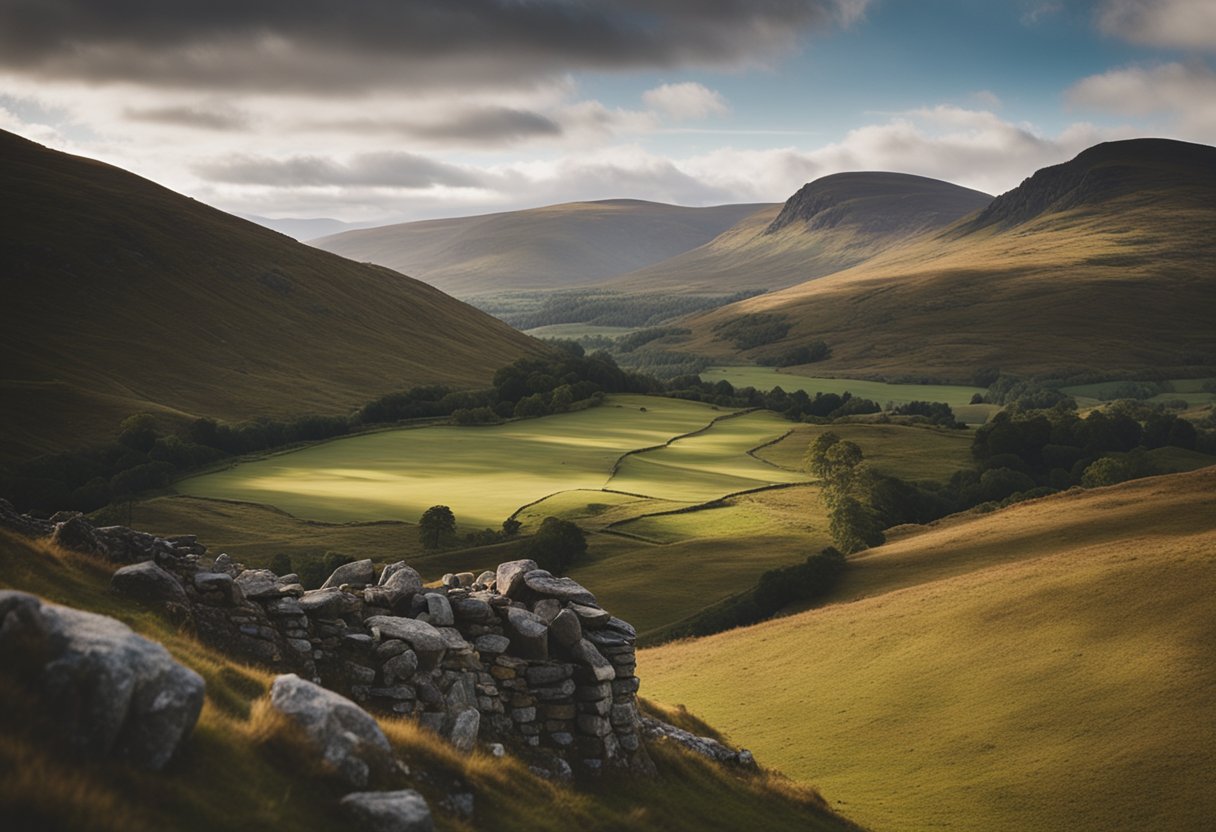
We explore the incredible legacy of Scottish visual arts, a testament to the nation’s rich cultural tapestry. Scotland’s cultural heritage is a compelling story of creativity and identity, from the vibrant stained glass that adorns its historic churches to the celebrated craftsmen and artists who have shaped its artistic narrative.
Stained Glass in Scottish Churches
Stained glass windows, with their riot of colours and intricate designs, are a celebrated feature of Scotland’s religious heritage, casting luminous stories onto the stone interiors of sanctuaries such as the Church of St Nicholas. These windows do more than just brighten; they narrate tales of faith, history, and community.
Celebrating Scottish Artists and Craftsmanship
Scotland prides itself on a long-standing tradition of artistry and craftsmanship. From painters who capture the rugged beauty of the Highlands to artisans practising centuries-old crafts, Scottish artistry is as diverse as it is profound. Celebrated artists have made their mark, interpreting the land and its lore through their unique lenses.
Unique Aspects of Scottish Culture
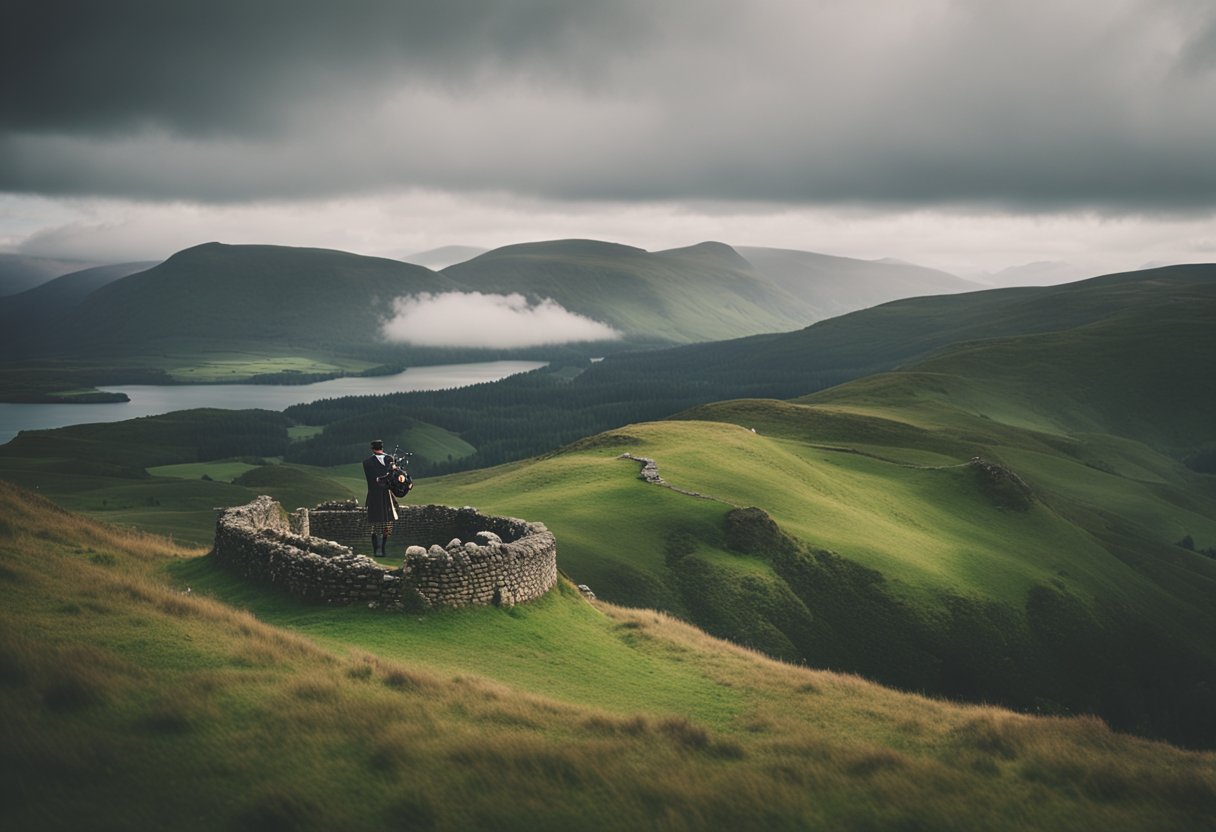
Scotland’s culture is a tapestry woven with vibrant traditions and a rich history that beckons from every glen and loch. In exploring this storied land, we uncover the distilled essence of Scottish heritage through its whisky and the pulsing heartbeat of community life in its historical events and festivals.
Traditional Scottish Whisky
Scotland is revered for its world-class whisky, a spirit deeply entwined with our national identity. There’s a profound respect for the time-honoured craft of whisky making, from the rugged Highlands to the gentle Lowlands. Traditional Scottish whisky, or “uisge beatha” in Gaelic, meaning “water of life,” is meticulously distilled and matured for at least three years, acquiring a complexity as rich as Scotland’s history. Distillery tours offer an insight into the patient art of whisky production, allowing us to savour the smoky peat, the sweet malt, and all the subtle flavours in between.
- Types of Scottish Whisky:
- Single Malt: Produced from malted barley at a single distillery.
- Blended Whisky: A mix of single malts and grain whiskies from different distilleries.
Historical Events and Festivals
Our calendar is dotted with occasions that celebrate historic milestones and showcase the aggressive spirit of the Scottish people. Traditional festivals like Hogmanay bring us together to usher in the New Year with merriment and the singing of “Auld Lang Syne.” Battles fought by legendary Scottish warriors are commemorated in festivals and re-enactments, where we proudly pay tribute to our forebears. The Highland Games manifest the cultural continuity of Scotland, highlighting feats of strength and skill reminiscent of ancient group gatherings.
- Notable Scottish Festivals:
- Edinburgh Festival Fringe: The world’s largest arts festival.
- Up Helly Aa: A fire festival in Shetland celebrating Viking heritage.
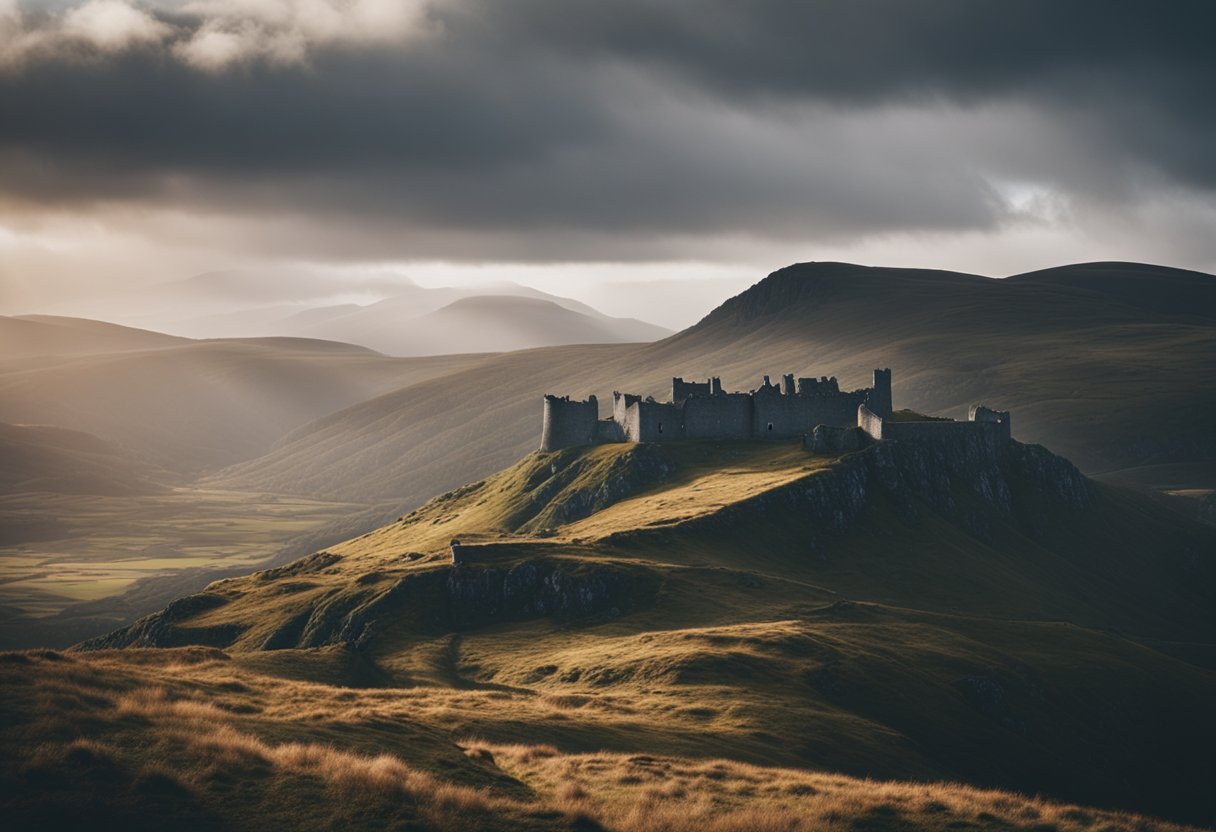
FAQs
This section addresses some of the most common queries about ‘Braveheart’, its historical accuracy, and how it resonates with the Scottish people and landscapes.
What aspects of ‘Braveheart’ align with historical facts?
The film captures the essence of the struggle for Scottish independence and the key battles that took place, but it takes liberties with the finer details. The portrayal of William Wallace as a courageous and iconic figure does resonate with his historical image, albeit romanticised for cinematic effect.
In what respects does ‘Braveheart’ deviate from historical records?
‘Braveheart’ is known for its numerous historical inaccuracies, ranging from the depiction of battles to the relationships between characters. For example, the Battle of Stirling Bridge is notoriously absent its defining feature—the bridge—in the film’s version.
How do the people of Scotland regard the film ‘Braveheart’?
The film is met with mixed feelings in Scotland. At the same time, some appreciate its boost to nationalism and the spotlight on Scottish history, while others are critical of the numerous inaccuracies and over-dramatisation of events.
Which locations in the Scottish Highlands served as filming sites for ‘Braveheart’?
The Scottish Highlands are beautifully showcased in ‘Braveheart’, with Glencoe being one of the most notable locations for its captivating and rugged landscapes that frame many of the movie’s scenes.
Could you highlight the key historical figures depicted in ‘Braveheart’?
Aside from William Wallace, key historical figures include Robert the Bruce, portrayed as a conflicted noble, and King Edward I of England, depicted as the primary antagonist. However, their characterisations have been criticised for historical inaccuracies.
What are some iconic lines delivered in ‘Braveheart’?
The film is well-known for its memorable lines, the most iconic being William Wallace’s passionate cry for freedom, “They may take our lives, but they will never take our freedom!” This line has since become synonymous with the character and the theme of Scottish independence.


